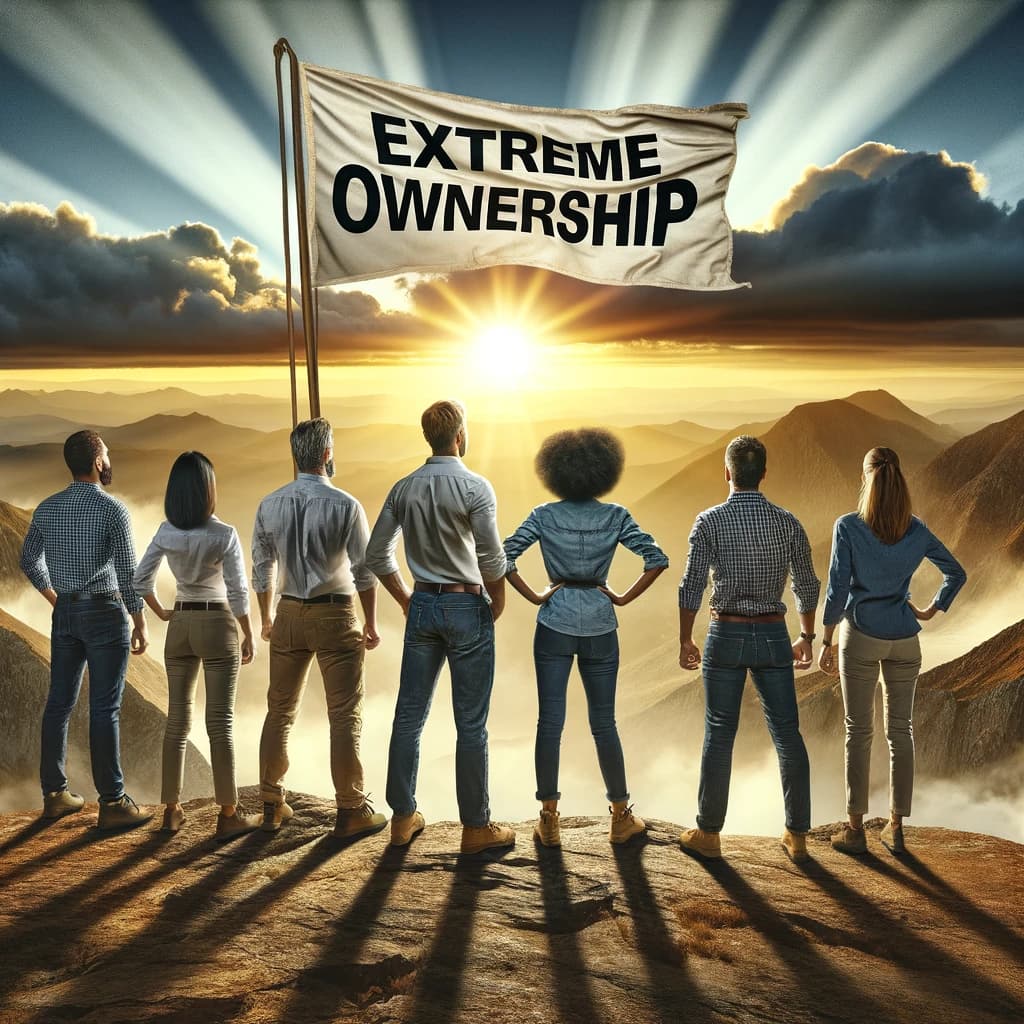
Extreme Ownership: The Catalyst for Achieving Professional Excellence
Playbook Software CraftsmanshipIn the realm of software craftsmanship and professional development, certain values stand out as pillars of success. These include extreme ownership, relentless pursuit of quality with pragmatism, proactive collaboration, active pursuit of mastery, inviting and giving feedback effectively, and creating ecstatic customers. These are the guiding principles that we adhere to at Incubyte. At the core of these values lies a principle that serves as a catalyst for achieving them: extreme ownership.
Extreme Ownership: The Foundation
Extreme ownership, a concept popularized by former Navy SEALs Jocko Willink and Leif Babin in their book “Extreme Ownership: How U.S. Navy SEALs Lead and Win,” emphasizes taking full responsibility for everything in your work and life. This principle is not just about leadership; it’s a mindset that can transform your career and the way you approach every aspect of your professional journey.
Relentless Pursuit of Quality with Pragmatism
What Does it Look Like?
Relentless pursuit of quality involves a commitment to delivering the highest standards in work without compromising on long-term goals for short-term gains. For instance, a software developer might spend extra time optimizing code to ensure robustness and performance, it may sometimes increase the development time initially, in the long run, this can save a lot of resources for the team, both money and time.
Impact of Extreme Ownership on Quality
Extreme ownership fuels this pursuit by instilling a deep sense of responsibility for the quality of work. When you own your role completely, you are driven to not just meet but exceed standards. You make decisions that balance ambition with practicality, avoiding shortcuts that could undermine long-term quality.
Proactive Collaboration
What Does it Look Like?
Proactive collaboration means actively engaging with colleagues to achieve shared goals. This could involve initiating team retrospectives, participating in pair programming, or facilitating knowledge-sharing sessions. For instance, during a project, a developer might organize regular check-ins to align the team and address any blockers.
Impact of Extreme Ownership on Collaboration
Extreme ownership promotes proactive collaboration by encouraging individuals to take responsibility for both their contributions and the success of the team. When you fully own your part in a project, you’re more inclined to foster a collaborative environment where everyone’s input is valued and utilized effectively.
Active Pursuit of Mastery
What Does it Look Like?
Active pursuit of mastery involves a continuous commitment to learning and improving one’s skills. For example, a developer might dedicate time to learning new technologies, attending workshops, or experimenting with innovative solutions to stay ahead in the field.
Impact of Extreme Ownership on Mastery
Extreme ownership drives this pursuit by emphasizing that personal and professional growth is solely in your hands. When you take ownership of your career, you actively seek opportunities to enhance your skills and knowledge, understanding that mastery is a journey that requires ongoing effort and dedication.
Give, Invite, and Act on Feedback
What Does it Look Like?
Effective feedback involves offering constructive criticism and receiving it with openness. For instance, a team leader might give timely feedback on a presentation, highlighting strengths and areas for improvement, while also encouraging team members to share their insights on leadership practices.
Impact of Extreme Ownership on Feedback
Extreme ownership enhances feedback practices by fostering a culture where individuals are accountable for both giving and receiving feedback. When you take full responsibility for your own development and that of your peers, you create a safe environment for honest, actionable feedback, leading to continuous improvement.
Create Ecstatic Customers
What Does it Look Like?
Creating ecstatic customers means going above and beyond to ensure client satisfaction. For example, a development team might offer additional support or enhancements to a project even after the initial delivery to ensure the client’s needs are fully met and exceeded.
Impact of Extreme Ownership on Customer Satisfaction
Extreme ownership drives the commitment to client success by reinforcing that their goals are your goals. When you own the outcomes of your work and its impact on the client, you are more invested in delivering exceptional results and ensuring that the client’s expectations are not just met but surpassed.
Conclusion
Extreme ownership is not just a principle of leadership but a transformative mindset that drives key professional values. By taking complete responsibility for our actions, decisions, and outcomes, we enhance our pursuit of quality, collaboration, mastery, feedback, and client success. This proactive and accountable approach leads to higher standards, stronger teams, and ultimately, greater success in our professional endeavors.
Take Ownership of Your Journey
Incorporating Extreme Ownership into your personal and professional life can be the key to unlocking your full potential. Start by embracing responsibility for every decision, action, and outcome, whether in your career or personal growth. Ask yourself, “What can I do today to improve the quality of my work, collaborate more effectively, or drive success for my team and clients?”
Begin your journey towards excellence by adopting a mindset of ownership, and watch how it transforms not only your work but also your entire approach to achieving your goals. Take the first step now—commit to Extreme Ownership and lead yourself toward mastery.